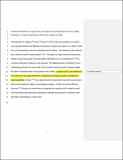Thorium distributions in high- and low-dust regions and the significance for iron supply
Author(s)
Hayes, Christopher Tyler; McGee, William David; Rosenblum, Jeffrey Laurence; Boyle, Edward A
Downloadboyle CST cruise Th manuscript_revEB.pdf (846.5Kb)
OPEN_ACCESS_POLICY
Open Access Policy
Creative Commons Attribution-Noncommercial-Share Alike
Alternative title
Thorium distributions in high- and low-dust regions and the significance for iron supply: Marine Thorium and Iron Cycles
Terms of use
Metadata
Show full item recordAbstract
Thorium and uranium isotopes (²³²Th, ²³⁰Th, ²³⁸U, and ²³⁴U) were investigated to refine their use for estimating mineral dust deposition and Fe delivery to the ocean. U concentrations and isotope ratios were consistent with conservative behavior and can safely be described using published U‐salinity relationships and global average seawater isotopic composition. Near Barbados, waters affected by the Amazon outflow contained elevated ²³²Th. This signals one region where the thorium‐dust method is inaccurate because of a confounding continental input. Dissolved ²³²Th fluxes in this region suggest that Amazonian Fe supply to the adjacent open ocean is much larger than local atmospheric deposition. The colloidal content of dissolved Th south of Bermuda was found to be quite small (2–6%), similar to that found north of Hawaii, despite the order of magnitude higher dust deposition in the Atlantic. This finding supports the assumption that dissolved ²³²Th and ²³⁰Th are scavenged at the same rate despite their different sources and also sheds light on the increase of dissolved ²³²Th fluxes with integrated depth. Outside the region influenced by Amazon River waters, dissolved ²³²Th fluxes are compared with Bermudan aerosol Fe deposition to estimate that fractional Th solubility is around 20% in this region. Finally, new dissolved and soluble Fe, Mn, and Cr data from the subtropical North Pacific support the idea that Fe concentrations in the remote ocean are highly buffered, whereas ²³²Th has a larger dynamic range between high‐ and low‐dust regions. Keywords: aerosol dust; Amazon River; Bermuda; Hawaii; Barbados
Date issued
2017-01Department
Massachusetts Institute of Technology. Department of Earth, Atmospheric, and Planetary Sciences; Massachusetts Institute of Technology. Department of Urban Studies and PlanningJournal
Global Biogeochemical Cycles
Publisher
American Geophysical Union (AGU)
Citation
Hayes, Christopher T., Jeffrey Rosen, David McGee, and Edward A. Boyle. “Thorium Distributions in High- and Low-Dust Regions and the Significance for Iron Supply.” Global Biogeochemical Cycles 31 (January 2017): 328-347 © 2017 American Geophysical Union
Version: Original manuscript
ISSN
0886-6236